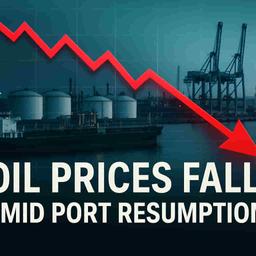The Indian government is considering a significant restructuring for National Insurance Co., Oriental Insurance Co., and United India Insurance Co. Options range from mergers (potentially with New India Assurance) to privatization, aiming to reduce the number of state-owned firms in non-strategic sectors. This initiative revives a 2018 plan, driven by the weak financial health and low solvency ratios of the three insurers, which have required repeated government capital injections.
The Union finance ministry is exploring major restructuring options for three public sector general insurance companies: National Insurance Company, Oriental Insurance Company, and United India Insurance Company. These options include merging two of them with the listed and profitable New India Assurance, merging all three state-owned entities, or merging two while preparing the third for privatization. This strategy aligns with the government's policy to limit state presence in non-strategic sectors to one or two companies.
This initiative revives a consolidation plan from 2018 that faltered due to heavy losses and poor solvency margins, necessitating significant government capital infusions. Recent profitability in some quarters of fiscal year 2025 (FY25) has brought the consolidation plan back to the forefront, with a more pragmatic approach focused on feasibility and sector strengthening.
The three targeted insurers – National Insurance, United India Insurance, and Oriental Insurance – continue to face financial strains. They are undercapitalized, with solvency ratios significantly below the regulatory minimum of 1.5x. For instance, United India Insurance reported a ₹154 crore profit in FY25 but had a solvency ratio of -0.65. National Insurance posted a ₹483 crore loss in FY25 and a ₹284 crore loss in Q2 FY26, with its solvency ratio worsening. Oriental Insurance reported a ₹144 crore profit for FY25 but had a solvency ratio of -1.03.
In contrast, New India Assurance is a profitable and financially sound entity, reporting an ₹988 crore profit in FY25 and maintaining solvency ratios above the 1.5x threshold.
The discussions also occur as the Indian insurance sector opens further to foreign direct investment (FDI), increasing competition. Consolidation is seen as a way for public sector insurers to enhance efficiency and customer focus to compete effectively.
Impact:
This news has a significant impact on the Indian insurance sector, potentially leading to consolidation, market restructuring, and changes in the operational landscape for public sector insurers. Investors may watch New India Assurance's role and the overall competitive dynamics. Rating: 7/10.
Difficult Terms Explained:
Restructuring: Reorganizing the structure or operations of a company or organization.
Merger: Combining two or more companies into a single new entity.
Privatization: Transferring ownership of a business or industry from the public sector (government) to the private sector.
State-owned companies (PSUs): Companies that are owned and operated by the government.
Non-strategic sectors: Industries or sectors considered not critical for national security or essential public services.
Solvency profile: A measure of an insurer's ability to meet its financial obligations, particularly to policyholders.
Solvency ratio: A financial ratio that measures an insurer's ability to pay claims. A ratio below 1.5 indicates potential financial weakness.
Capital support: Financial assistance provided by the government to state-owned companies to meet their capital requirements.
Regulatory forbearance: When a regulator allows a regulated entity to deviate from certain rules or requirements, usually temporarily, to avoid immediate distress.
Underwriting losses: Losses incurred by an insurance company from its core business of selling insurance policies, before considering investment income.
Premium income: The total amount of money an insurance company receives from policyholders for insurance coverage.
Investment assets: Assets held by an insurer for investment purposes, such as stocks, bonds, and property.
Current assets: Assets that are expected to be converted to cash or used up within one year.
Foreign direct investment (FDI): An investment made by a company or individual from one country into business interests located in another country.

